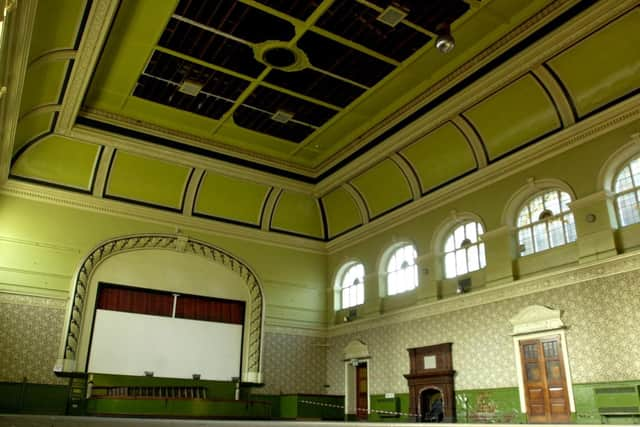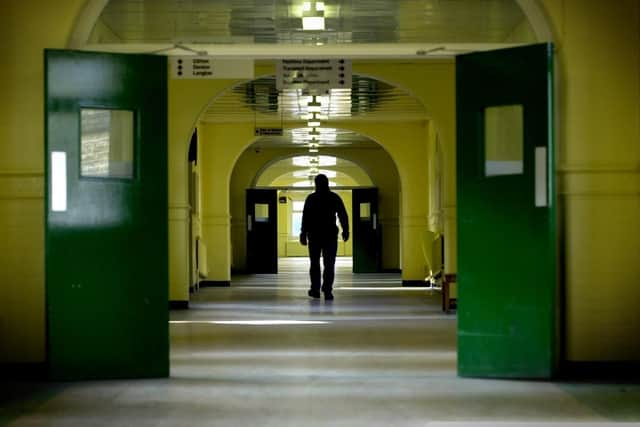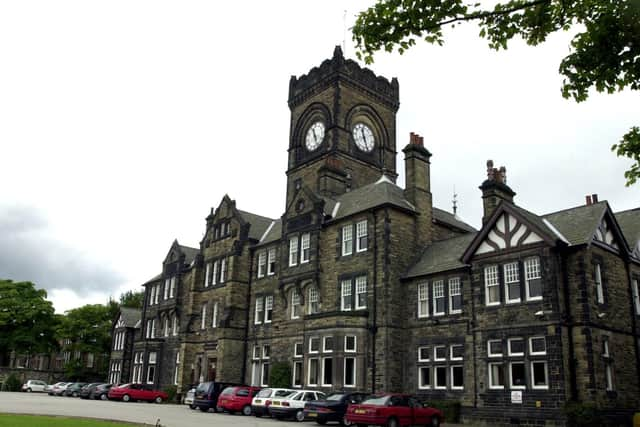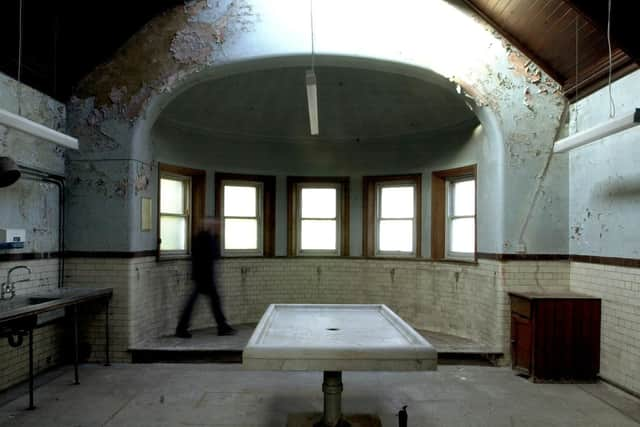High Royds: Haunting tales from Yorkshire's most notorious lunatic asylum


Now a luxury housing development and renamed Chevin Park, the impressive Victorian gothic facade hides a grim past as a pauper lunatic asylum.
The 300-acre High Royds estate - a self-sufficient and secure hospital for the 'mentally deficient' - opened in the village of Menston, near Leeds, in 1888.
Advertisement
Hide AdAdvertisement
Hide Ad

Self-sufficient
It had its own library, surgery, dispensary, butchery, dairy, bakery, shop and workshops, and there was also agricultural land used for growing produce. There was a ballroom for musical entertainment - now a residents' lounge - an underground vault and a mortuary.
Patients lived in wards and worked on the farm or in the kitchen and laundry. The complex had its own spring-fed reservoir to provide a water supply.
The site was connected to the nearby Wharfedale railway line to Ilkley, but the private sidings were closed in 1951. Nearly 3,000 paupers are buried in a graveyard next to the railway, with a further 900 in unmarked graves in Guiseley.


Advertisement
Hide AdAdvertisement
Hide AdThere has been controversy over various treatments given to patients at the asylum during its history, including the administration of shock therapy without anaesthetic. In the asylum's early years, before mental illness was considered treatable, inmates would be simply restrained and left in rooms, many of them until their deaths.
High Royds evolved into an NHS psychiatric hospital, but it eventually became unsuitable for mental health treatment, and was shut in 2003 and its services relocated. It has since been developed for residential use, and some of the original listed buildings, including the clock tower, have been converted into apartments.
Filming location
High Royds has been used as a filming location for several productions, including the movie Asylum and television series No Angels, Bodies, Fat Friends, Heartbeat and The Royal.


Scenes from the 2005 thriller Like Minds, which is set in a boarding school and stars Eddie Redmayne, were filmed in High Royds after its closure, as well as at Bradford Grammar School and Giggleswick School.
Advertisement
Hide AdAdvertisement
Hide AdDavid Jason's 2005 drama Diamond Geezer was also shot there. Anna Hope's 2011 novel The Ballroom is set in High Royds and inspired by the real-life ballroom.
The inmates who spent their lives behind High Royds' walls
- The first patient entered into the casebook was Elizabeth Johnson, who spent 16 years at High Royds. She died in 1904.


- Many of the inmates were suffering from mental health conditions including depression, paranoia and schizophrenia - but some had poorly-understand illnesses such as epilepsy. Others had learning difficulties and conditions that would be nowadays recognised as autism.
- Women were particularly vulnerable to incarceration at the behest of a male relative - this sometimes happened to wives whose husbands wished to end the marriage.
Advertisement
Hide AdAdvertisement
Hide Ad- Bricklayer Thomas Edmondson, from Bradford, was experiencing paranoid delusions when he was admitted in 1889. He died 39 years later, having spent the rest of his life in the asylum.
- Ethel Wilson was just six years old when she arrived in 1895. She was labelled as an 'idiot' and could be physically violent, but seems likely to have had a learning disability. She died at just 26 in 1925, having never left the institution.
- Young Wakefield farmer Robert Cort was epileptic, and would cower away from other people. He spent 30 years at High Royds.
- 19-year-old Ada Ward worked as a spinner in Pudsey when her father admitted her in 1911. She had been 'insane' for just three weeks and had tried to commit suicide - but this was enough to condemn her to a life behind the hospital's walls. She was considered 'hysterical' and remained there until her death aged 75 in 1967 - having witnessed the asylum's transition from Victorian relic to NHS hospital.